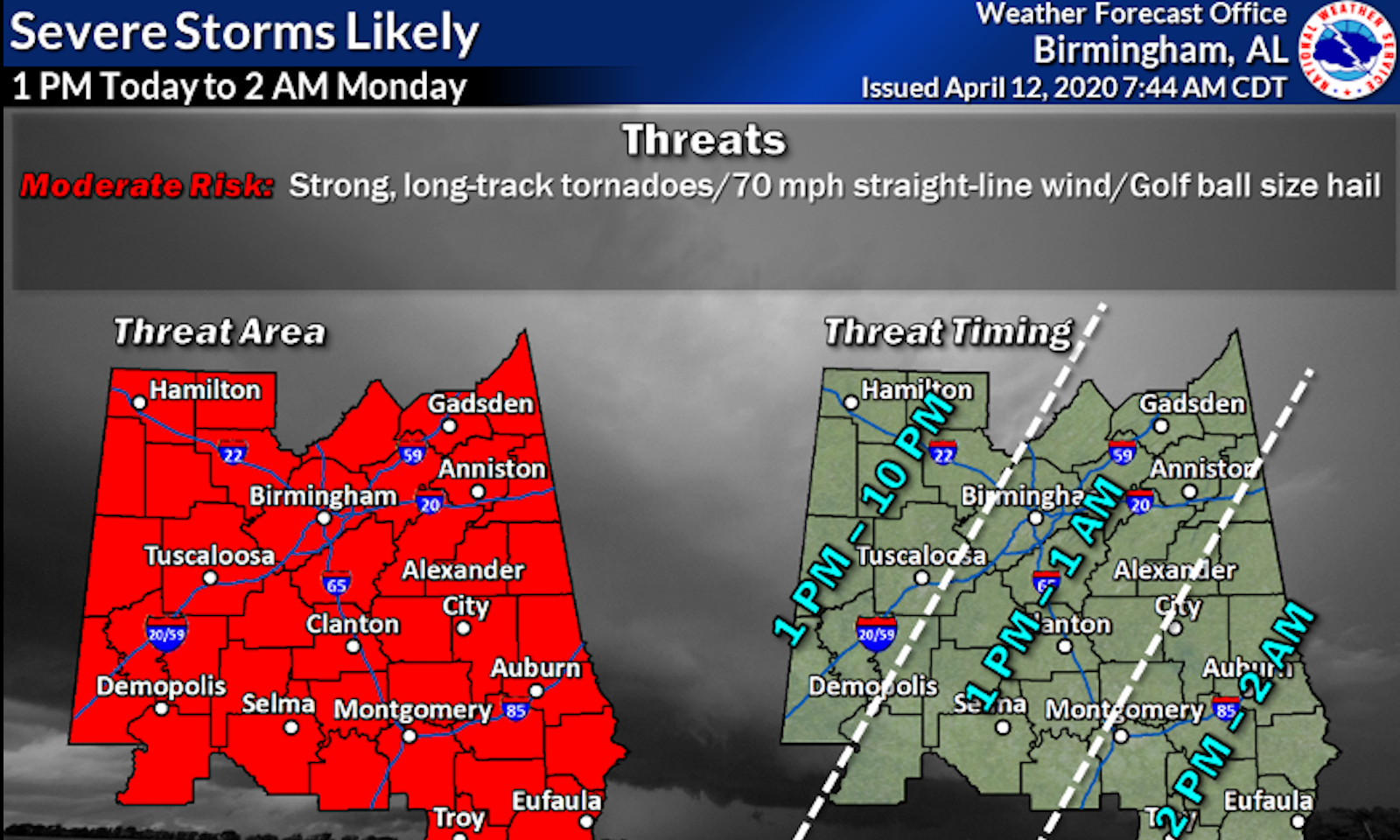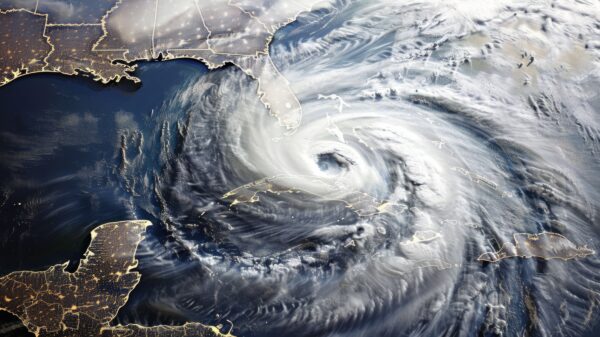There is a strong possibility of severe weather on this Easter Sunday.
Alabama Gov. Kay Ivey has announced that, despite some risk of COVID-19, storm shelters should still be open if and when Alabamians need them today.
“Unfortunately, Alabama is far too familiar with the unpredictability of severe weather,” Gov. Ivey said. “Our state stands prepared and ready to face whatever Mother Nature brings, even amidst a health pandemic. Both the National Weather Service and the State Public Health Department remind Alabamians that the use of shelters and other resources take precedent, should the need arise. The safety and protection of Alabama lives is paramount. Be sure to tune in to your trusted weather source, and stay weather aware throughout this holiday weekend.”

ABC 33/40 TV’s James Spann is reporting that: “A dynamic storm system will bring a dangerous severe weather threat to Alabama and the Deep South,” this afternoon and tonight. “Strong tornadoes, potentially widespread damaging winds, and large hail are all possible.”
”SPC maintains a “moderate risk” (level 4/5) for much of Central and West Alabama, with an “enhanced risk” (level 3/5) for the rest of the state,” Spann reported.
Spann said that, “There is a significant risk of severe storms for all of Alabama” this afternoon and tonight.
Spann is predicting that thunderstorm will develop “north of a warm front; those storms will be “elevated” with the main threats coming from hail and strong winds. These storms will likely come during the midday and early afternoon hours, around 1 to 3 p.m. Unstable air will surge northward in the wake of the warm front, and the core threat of supercell storms will come during the late afternoon and evening hours, generally between 3 and 10 p.m.”
“All modes of severe weather will be possible, including large hail, damaging winds, and tornadoes,” Spann warned. “Based on the forecast dynamic/thermodynamic fields, a few strong/violent, long track tornadoes will be possible.”
The “Heaviest rain will fall over the northern quarter of the state, communities across the Tennessee Valley could see 2-3 inches of rain with some flooding potential,” Spann predicts. “Amounts will be lighter to the south across Central Alabama (1-2 inches).”
Spann cautioned that there will be “UNCERTAINTY: Thunderstorms events in “Dixie Alley” are often complex, and often the magnitude of a severe weather event is determined by small scale boundaries and interactions that are hard to define in advance. But confidence is high in the large, synoptic scale event tomorrow.”
Most of us can remember the powerful tornados that killed over 200 Alabamians on April 27, 2011. This is not going to be that severe.
“Alabama experienced 62 tornadoes that day, many were strong/violent,” Spann said. “Those type events happen once every 40 years on average. But that doesn’t mean you don’t need to prepare for the event tomorrow. If there is only one tornado in the entire state tomorrow, and if that one comes through your neighborhood, then that is YOUR April 27. And, there is a good chance we see more than one tornado,” this evening.
Spann warns that every Alabamian should have a NOAA Weather Radio. “They work independently of cell networks, and are very reliable.” “On your phone, be sure WEA alerts are active.”
In a tornado warning the whole family needs to go to their safe place. “In a site built home, it is a small room (closet, bathroom, closet) on the lowest floor, near the center of the house, and away from windows.” Spann advises that everyone have helmets and portable airhorns. The airhorns are for “If you are injured and need to alert first responders.” Also wear hard sole shoes in case, “You have to walk over a tornado debris field.”
“If you live in a mobile home, you cannot stay there during a tornado warning polygon,” Spann warned. “Know the location of the nearest shelter or safe place, and know how to get there quickly. Check with your local county EMA (Emergency Management Agency) concerning shelter locations if you need help.”
There is a risk of coronavirus transmission at the shelters; but that should not deter you from seeking shelter.
The National Weather Services offices in Alabama, and the Alabama Department of Public Health:
“The decision to seek shelter in a community storm shelter is certainly made more difficult by the consideration for COVID-19, and each individual will need to make an educated decision on where and when to shelter from a tornado. At this time, the Alabama Department of Public Health (ADPH) is recommending that your first priority should be to protect yourself from a potential tornado. If a warning is issued for your area, you are more likely to be affected by the tornado than the virus.”
Be warned however, that “the decisions to open any community shelters are done at the local or county level. Before you make a decision to go to a community shelter, you should check with your community shelter managers to ensure they are open, and if there are any local COVID-19 considerations. Certainly, wherever you choose to shelter from a tornado, you should use as many precautions as possible to inhibit the spread of COVID-19 as best as you can. If you rely on public community shelters, now may be the time to explore other options that might keep you safer from severe weather and possibly limit your exposure to COVID-19.”
The governor has ordered that the shelter managers open the shelters; but check to make sure as early as possible and plan accordingly.






















































